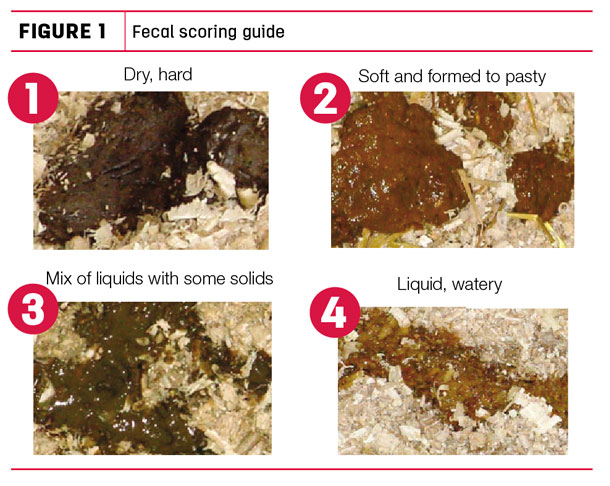What is scours? Scours, also known as calf diarrhea, is the result of inflammation in the intestinal tract. The USDA reports that 61 percent of calfhood sickness is due to scours. Severe cases of scours can affect animal growth and impact overall performance and profitability.
What causes scours?
Scours can be caused by a variety of infectious agents, including viruses, parasites and bacteria. Periods of stress, such as weaning, can also cause incidences of scours. Oftentimes, the cause of scours is multifaceted and can’t be attributed to a single agent.
When does scours occur?
Scours commonly occurs in the first month of life. Early in life, a calf’s immune system is developing and is more vulnerable to novel infectious agents.
What can be done to prevent or control scours?
Below are five tips to help control scours.
1. Know the symptoms and detect scours early
Early detection of scours is essential so that fluids and electrolytes can be restored swiftly to correct dehydration. Evaluate calves for the following symptoms:
- Watery stool, the most apparent sign of scours. The stool may be brown, green, yellow or gray in color and may also have specks of blood or mucus in it. Scours also cause frequent defecation.
- Dehydration, which is characterized by sunken eyes or abdomen. Dehydration needs to be corrected as soon as possible to restore electrolytes and acid-base balance.
- Other common symptoms observed with scours include defecation, depression, weak suckling reflex and abnormal breathing.
2. Manage the herd to minimize calf exposure
Simple biosecurity measures should be implemented in management practices to minimize calf exposure to pathogens and stress. On-farm biosecurity measures may include:
- Keeping the calving area as clean as possible.
- Maintaining a low stocking rate in calving areas. High stocking rates increase fecal contamination in calving areas and the risk of calf exposure to pathogens.
- Isolating sick calves and their dams from the cow herd to prevent the spread of pathogens.
- Segregating calves according to age to prevent the transmission of pathogens from apparently healthy, older calves to newborn calves.
3. Calf immunity
Calf immunity starts with the dam. Calves are born with an immature immune system, so high-quality colostrum is important for early calf health. Colostrum is the mother’s first milk, which contains antibodies that are essential for establishing a newborn calf’s immune system.
4. Dam nutritional management
Don’t overlook the importance of meeting the dam’s nutritional requirements during gestation and lactation. Protein and energy requirements are critical to support calf growth and milk production, but don’t forget about the essential micronutrients such as minerals and vitamins that also have roles in calf growth and health.
- Remember, fall and spring calving herds will have different nutritional requirements depending on when they calve.
- Fall calving cows will be lactating throughout the winter, so they will have higher nutritional requirements compared with spring calving cows.

5. Use the fecal scoring guide to check your fecal score
If calves have a fecal score of less than 2.5 for more than five days, your calves are unhealthy and require attention (see Figure 1). The goal for overall herd health should be no more than 2 to 3 percent of your calves being affected with diarrhea.
% diarrhea = total number of calves with fecal score of “4” x 100/total number of calves ![]()

Shelby Roberts
- Post Doc Research Fellow
- Alltech
- Email Shelby Roberts
PHOTO: Scours commonly occurs in the first month of life. Staff photo.








